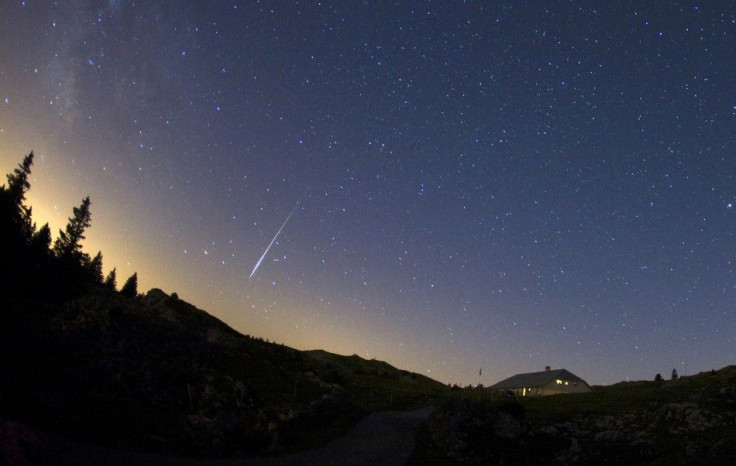Perseid Meteor Shower 2013 Live Stream: Watch The Peak Of The Year's Best Meteor Shower

The highly anticipated peak of the Perseid meteor shower happens on Aug. 11, and Slooh will be broadcasting a live stream of the annual event. For stargazers, the peak of the Perseids could average 100 meteors an hour with plenty of fireballs, larger meteors that burn brighter and longer, thrown in for good measure.
The Slooh broadcast will begin on Aug. 11 at 4 p.m. PDT (7 p.m. EDT), from its camera located at Mt. Teide, in the Canary Islands, 8,000 feet up and free from any light or other factors that could limit the view of the Perseids. Slooh's camera will provide a live stream of the meteor shower and a panel of experts and astronomers will be on hand all night to answer questions and point out interesting events in the night sky. For those in the city, in the southern hemisphere or experiencing a cloudy night sky, a live stream will provide the best view of the Perseids possible. The Perseid meteor shower's peak will occur early on Aug. 12.
Each year in August, the Earth passes through the debris trail left behind by the comet Swift-Tuttle. The meteoroids burn up in the Earth's atmosphere, producing hundreds of meteors that make up the Perseids. The meteor shower has a long history of observation and is also known as the "tears of St. Lawrence" as the peak of the Perseids occurs around the same time as the saint day, Aug. 10, of the martyred St. Lawrence.
For those wanting to experience the Perseid meteor shower up close, it's as easy as going somewhere that's dark. In the northern hemisphere, looking northeast to the constellation Perseus, stargazers should be able to view the numerous shooting stars produced by the Perseids. Stargazers in the southern hemisphere won't be as lucky, but they can still view the meteor shower by looking toward the northern horizon. There are also several locations just outside of several major cities such as New York or Los Angeles that will have a clear view of the Perseids.
The Perseid meteor shower live stream begins at 4 p.m. PDT (7 p.m. EDT), and can be viewed below.
© Copyright IBTimes 2024. All rights reserved.












